Last year’s coverage of Portland’s MADE Show was fun and came rather easily when finding things to write about. But, this time around, it seemed a little harder to stay focused. My inner bike nerd was awestruck by the sheer talent that was on display.
The show itself was a little bigger, not only in its footprint but in the amount of exhibitors that were there. So, that being said, I am a lil’ slow getting the cool stuff down and published.
BikeRumor Most Unique Bike Award
Another thing that differs this time around is that I thought it might be fun to give out two “awards”. The first is the Bikerumor Most Unique Bike Award. This was awarded based on what I saw while roaming the show for well, the most unique bikey type item.
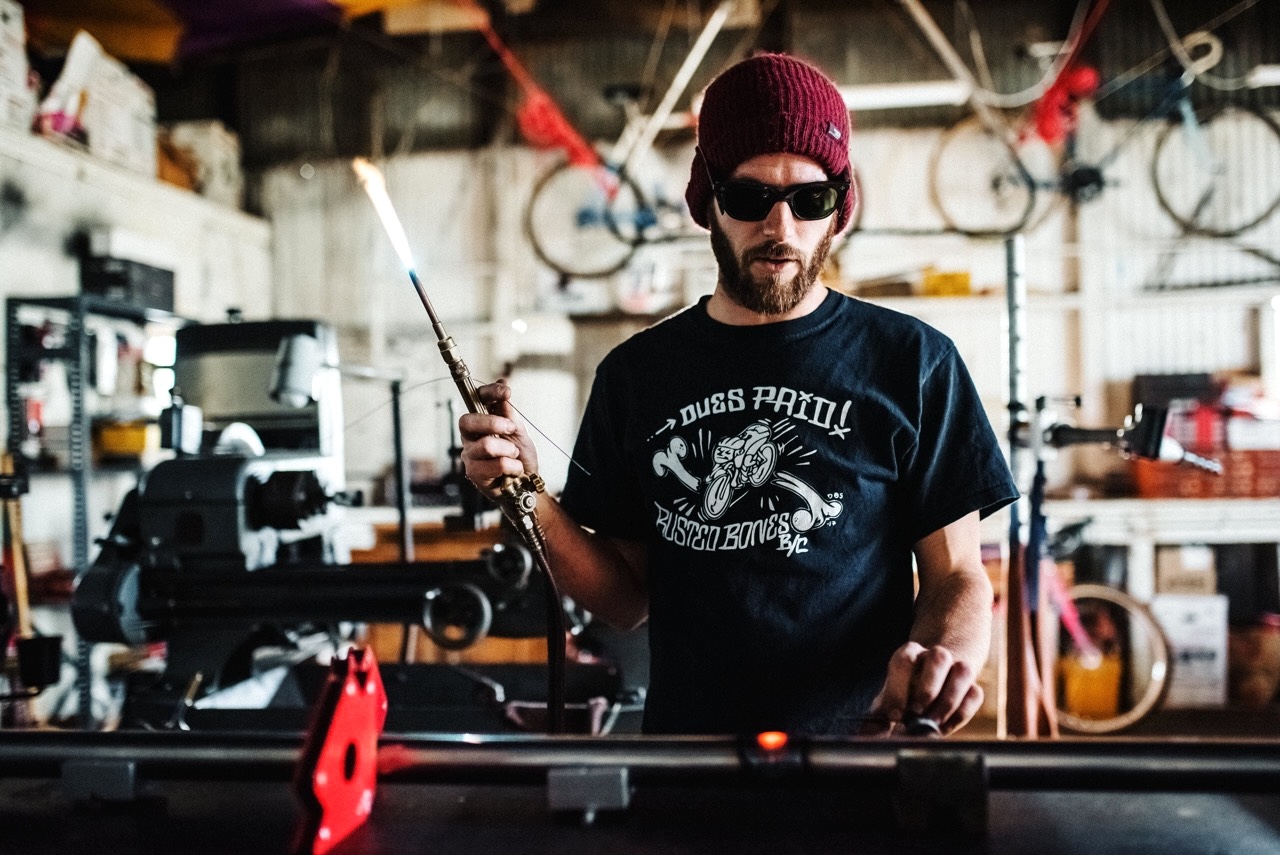
When I saw the BTCHN’ Bikes booth, I knew I would find something unique there. Most of what Tyler builds is unique, and all of it is beautiful. He is a true master of his craft. Then he showed me his prototype hardtail bike with geometry that is adjustable on the fly. It was a great idea, that was executed with precision. Not to mention it’s a beautiful bicycle.
I left the booth knowing that it was, in my opinion, the show’s most unique item. Let’s learn a bit more about the MADE 2024 BikeRumor Most Unique Bike.
The BTCHN’ Bikes GeoShift
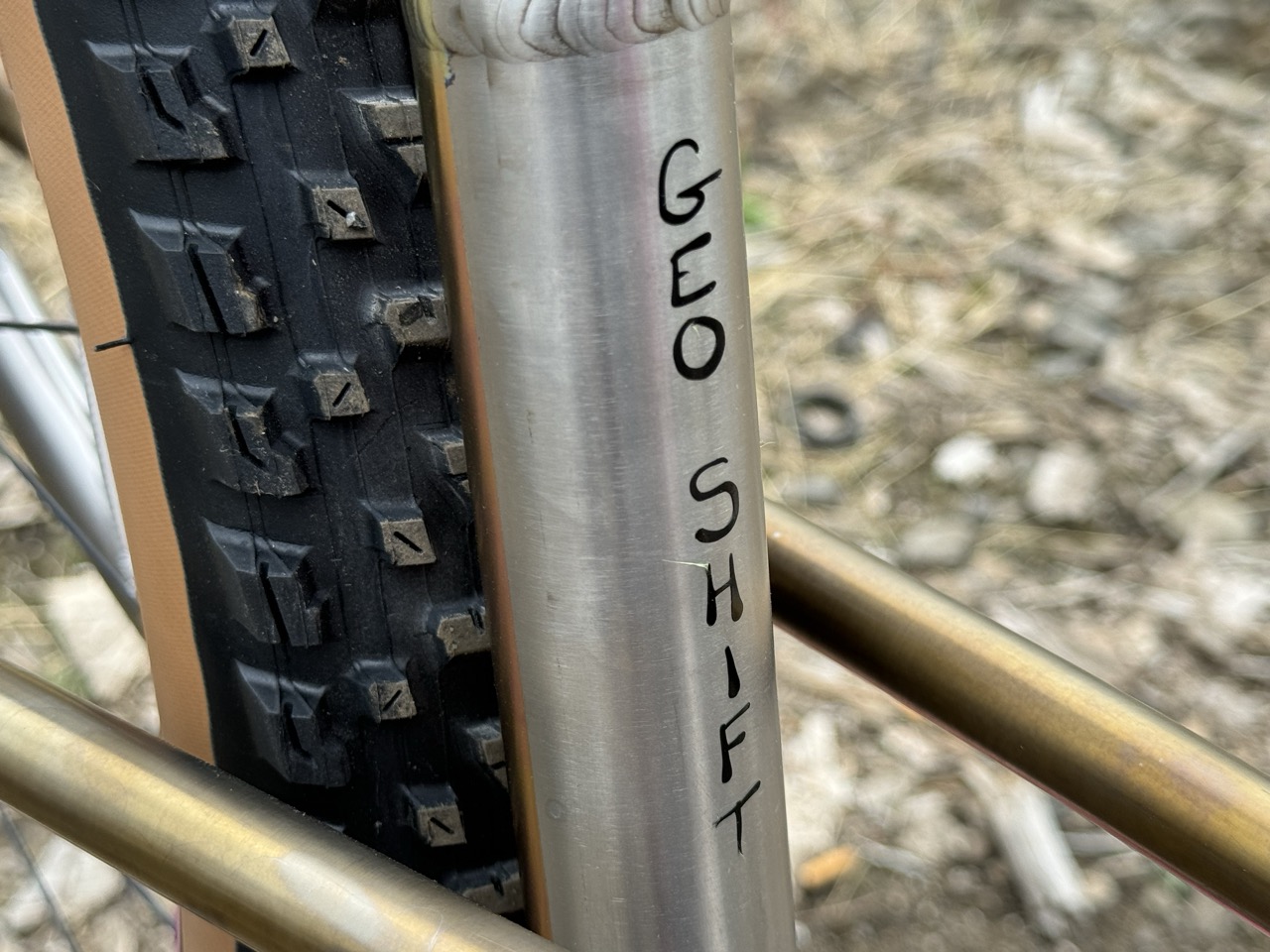
BTCHN’ Bikes is operated out of Chico, California, by Tyler Reiswig, who I believe is a genius frame builder. He’s a think-outta-box kinda builder, and that appeals to me. He’s not reinventing the wheel, but his ideas are his own and he executes them with precision and beauty.
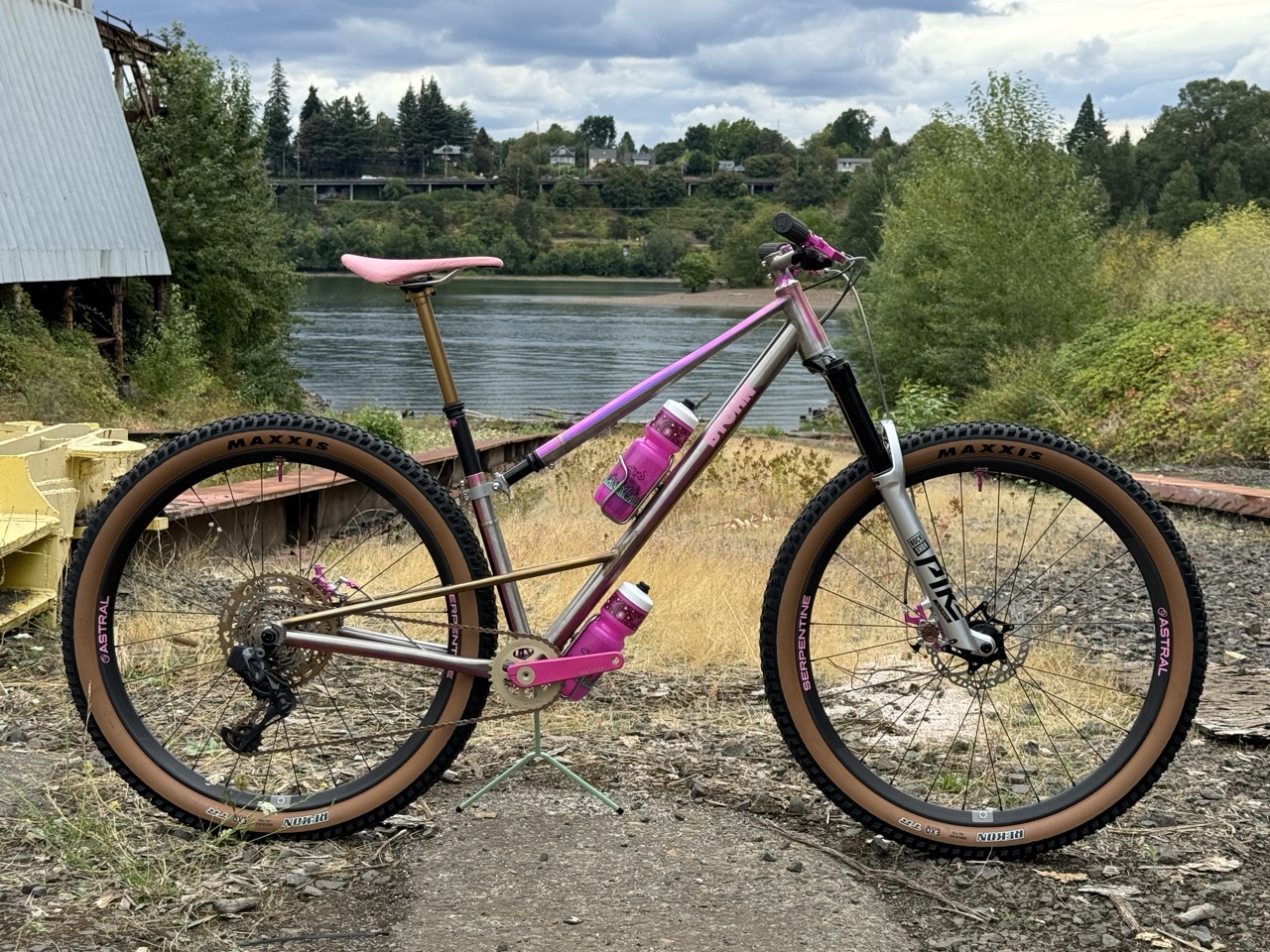
Tyler told me that the GeoShift is currently a proof of concept, and what I saw at the show was prototype #1. According to Tyler, the GeoShift is going to get a lot of testing before the next iteration is built for his engineer Nicholas.
Tyler also said, “We do believe there is some very real utility of having an adjustable seat angle for varied terrain, and all-day kind of rides. However, at the very least this is going to act as a wonderful tool for experimentation and educating us further about the limits of functional bike geometry“.
He continues, “It would not be reasonable nor economical to build a frame with a fixed seat position of say 83 degrees just to see if it works better in a steep climb, as it would surely be a heinous pile of crap to pedal in all other scenarios than climbing a wall. So here we go, an adjustable test platform“.
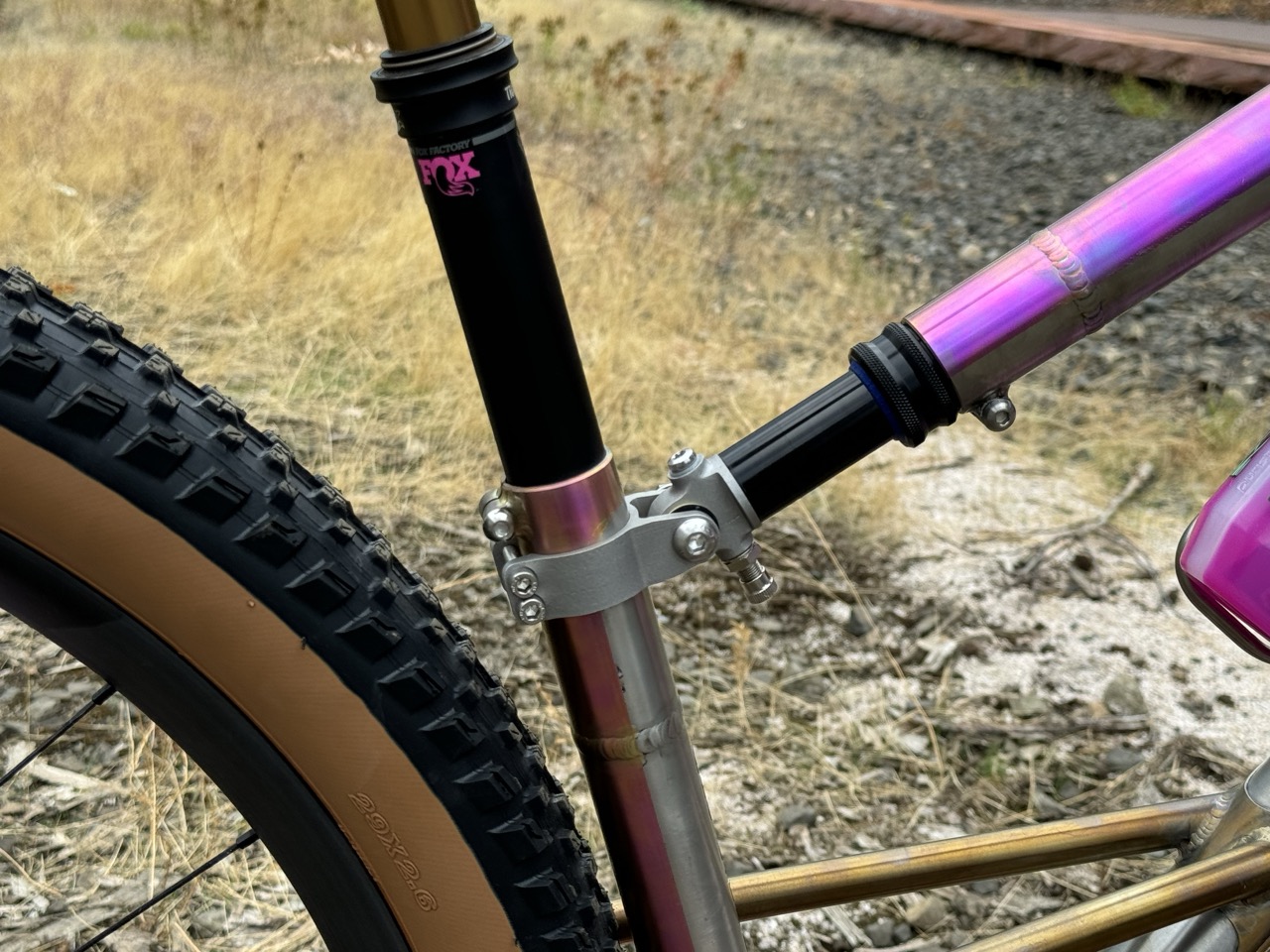
Hydraulics…
Tyler told me that the hydraulic actuator is a heavily modified Bunker dropper post. They used the Bunker primarily because of the internal layout and general construction. This allowed them to replace the necessary components to reverse the direction of actuation. Genius!
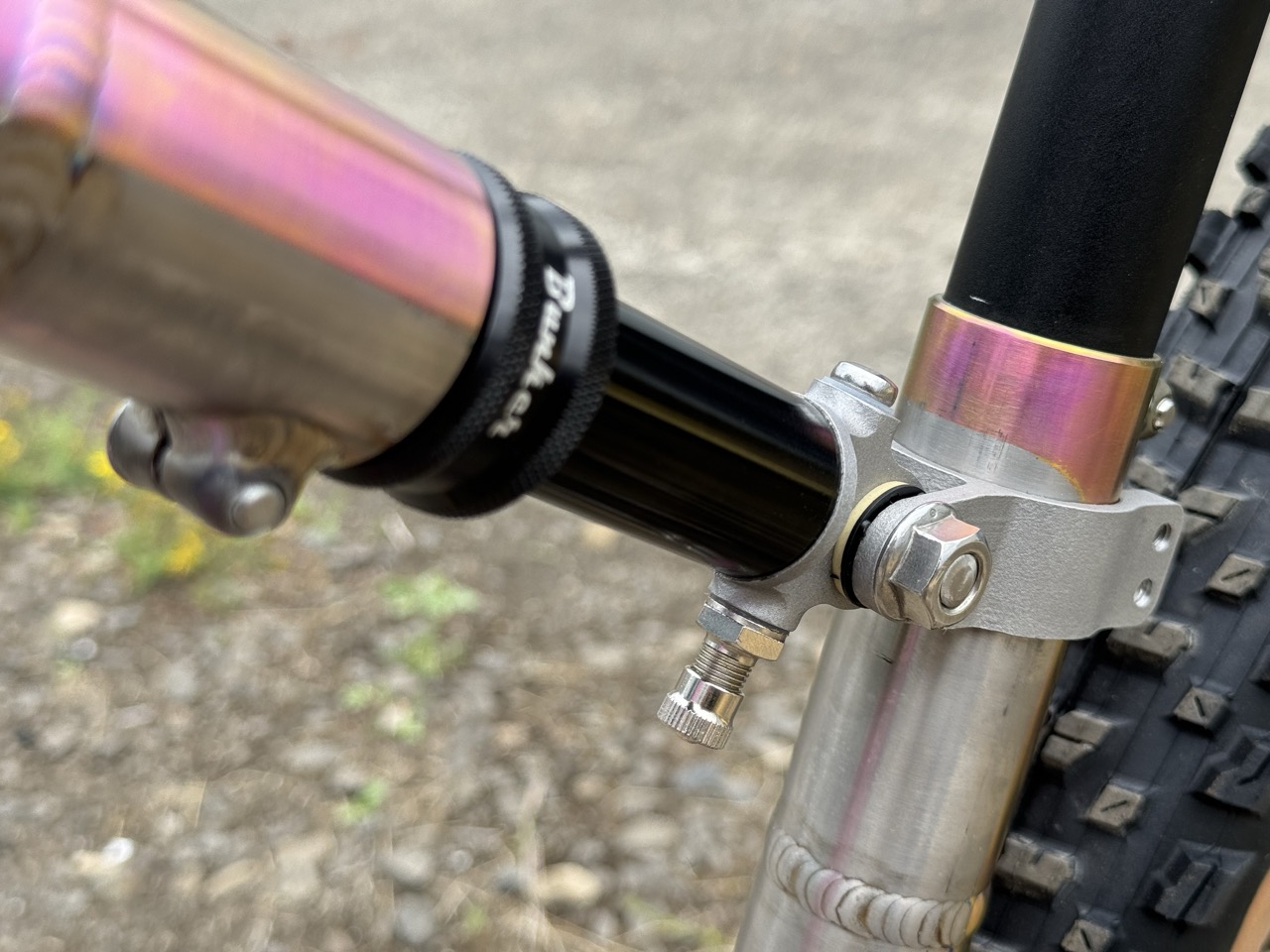
They then replaced the head unit with a 3d printed aluminum dual chamber and provisions to attach to the seat tube using standard rear shock mounting hardware. With shortened internal shafts and adding a manually machined IFP, Tyler said that this was a rather in-depth project that their engineer Nicholas Payton undertook. And managed to nail it on the first attempt.
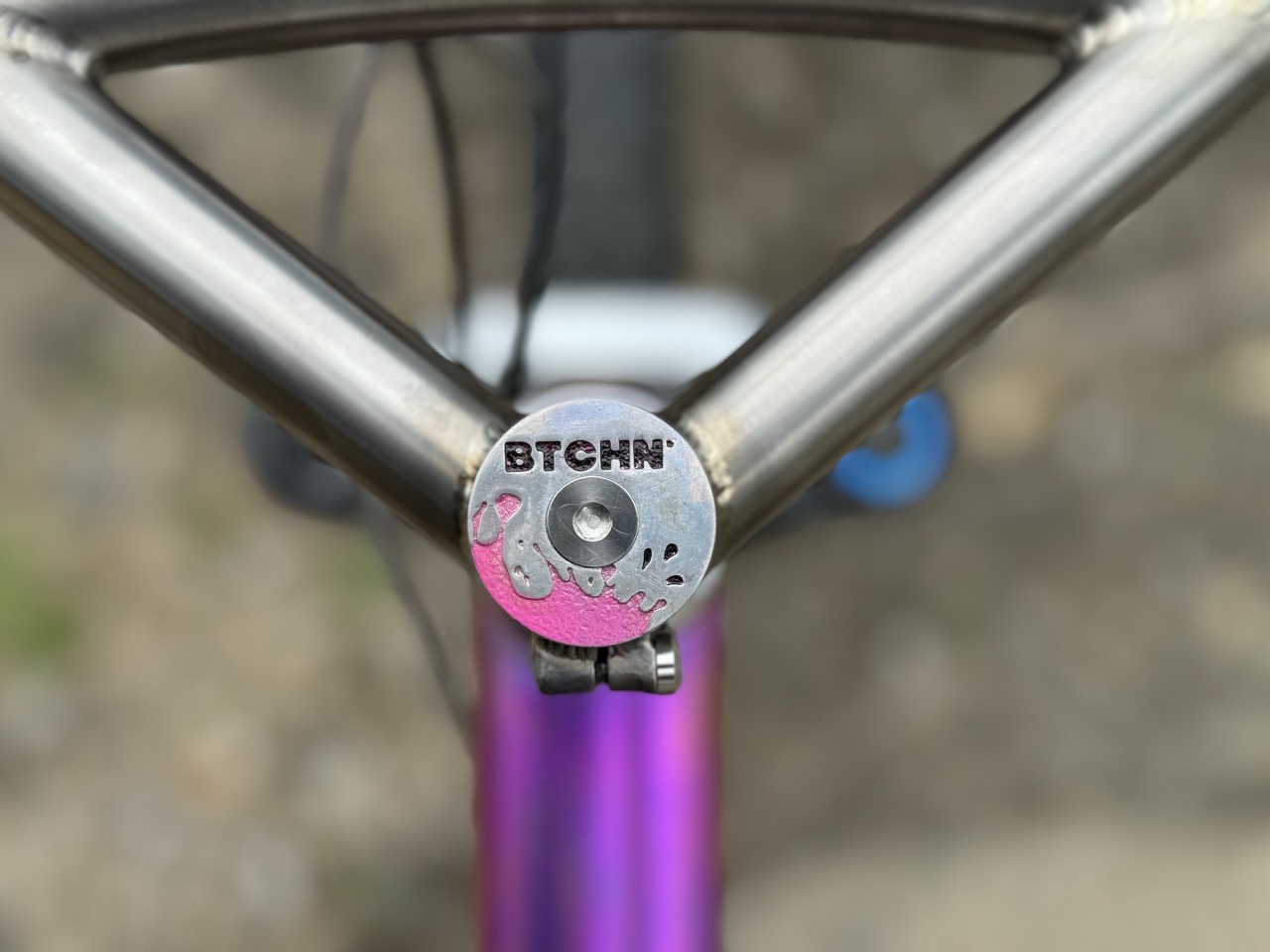
Actuating the GeoShift
The lever to actuate the shift in geometry is controlled by a modified Paul Components Dropper Trigger. It was modified into a dual lever design that allows access to both the dropper and GeoShift. Either lever can easily be operated and potentially be actuated at the same time.
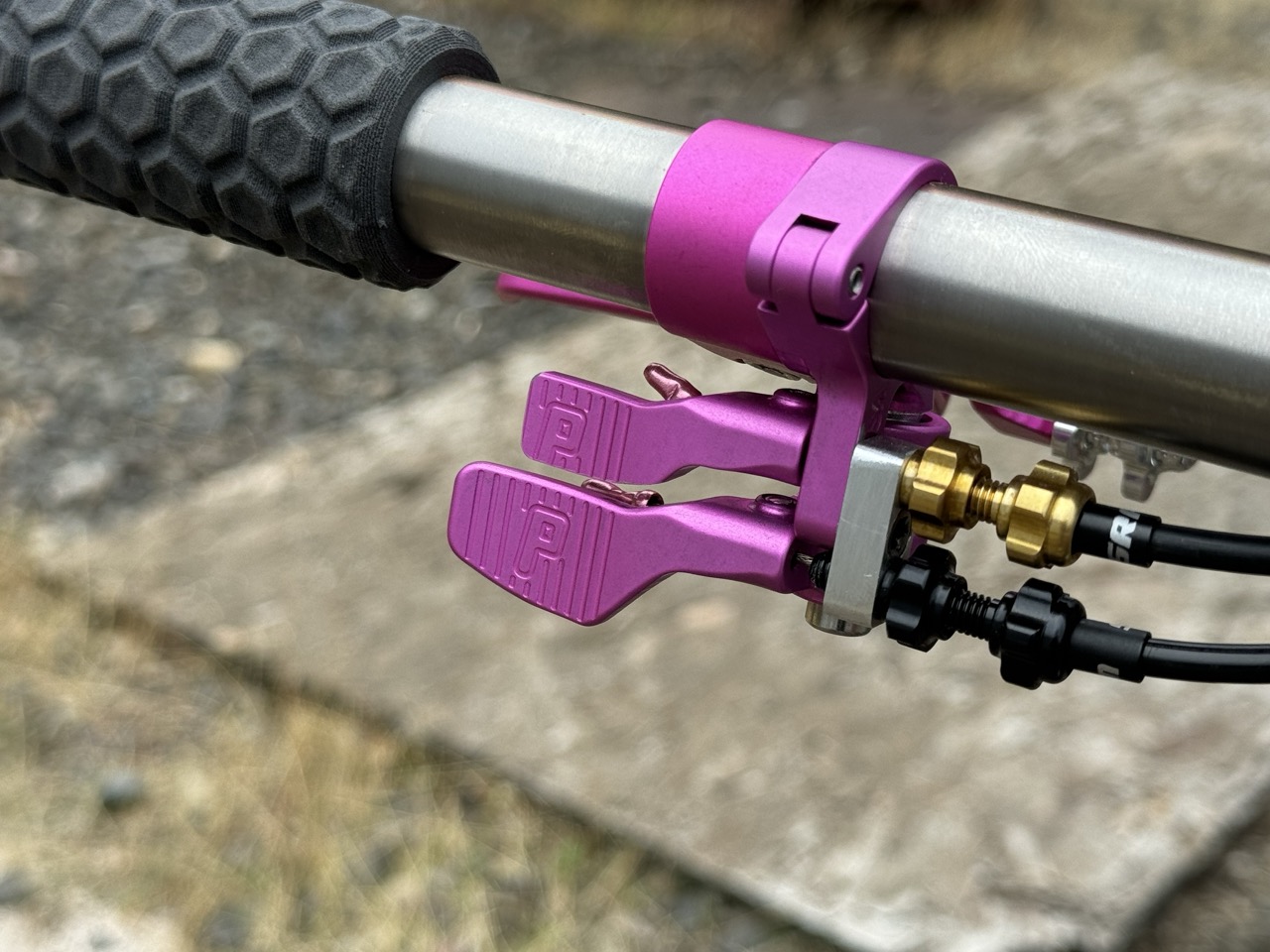
That means that when you push both at the same time, it will raise the saddle and increase your seat angle all at once to attack a climb. Then when descending, push them both again to lower the saddle and relax the seat angle… Bob’s your uncle!
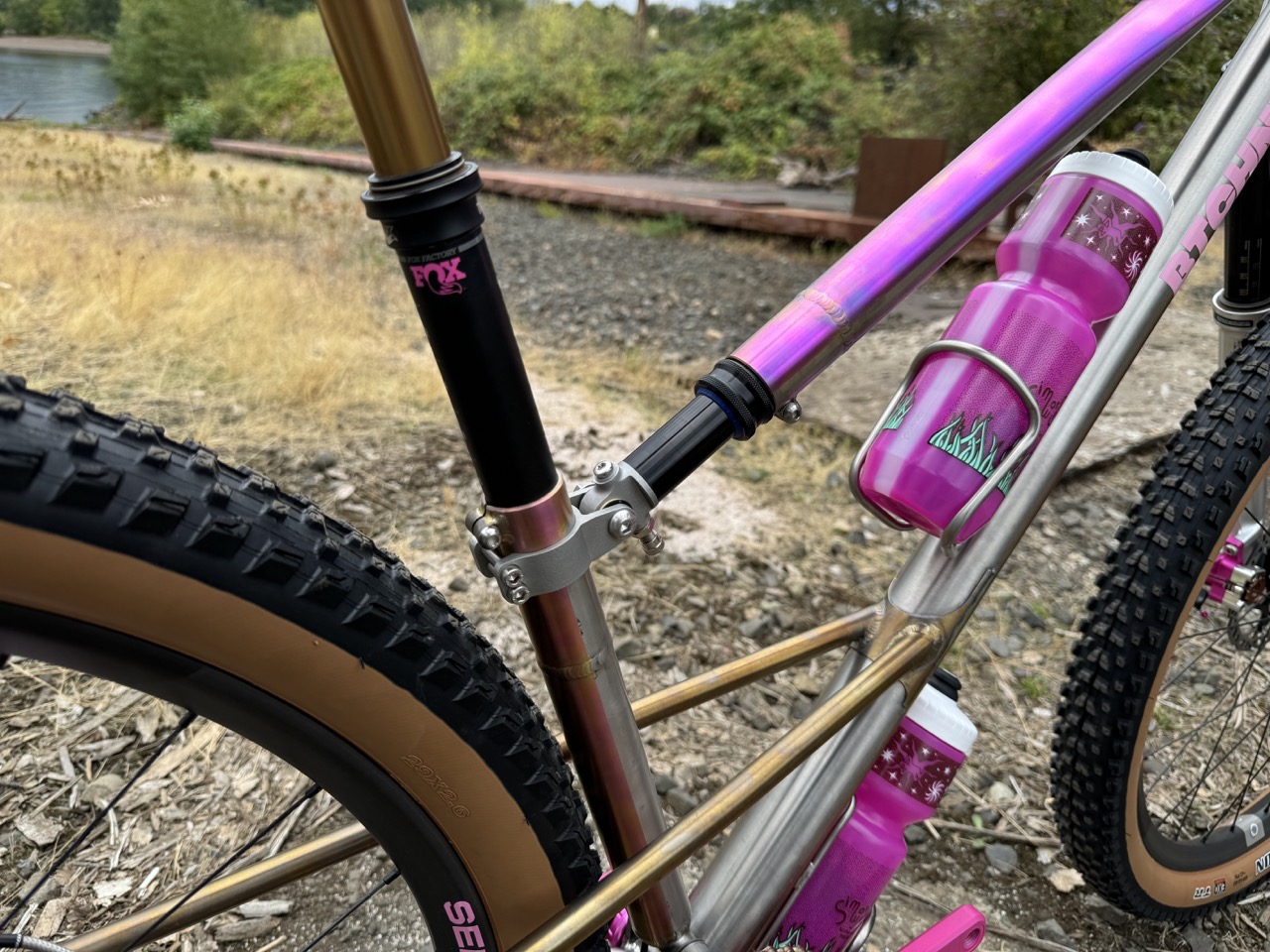
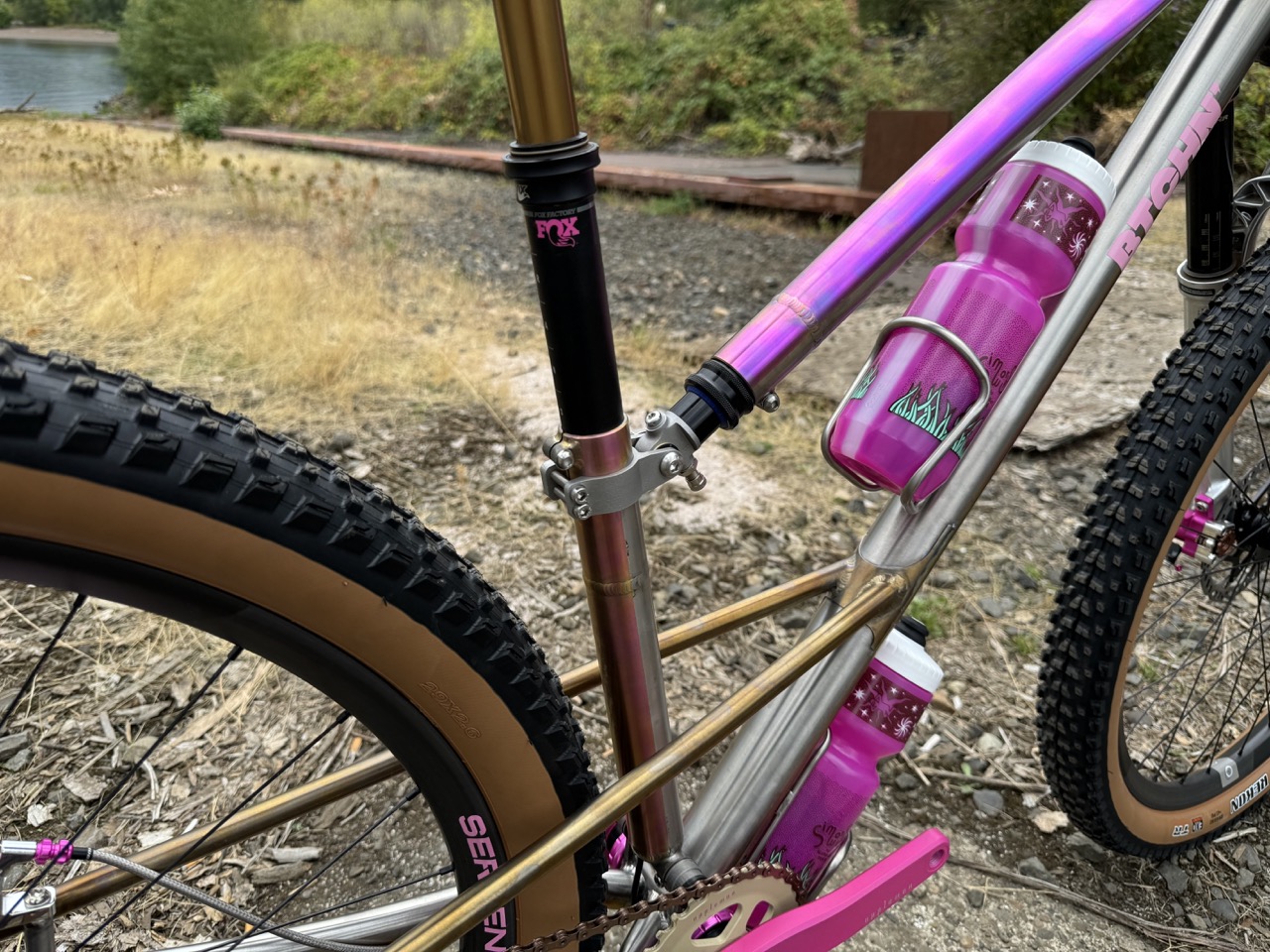
The amount that the GeoShift adjusts the seat angle is 10 degrees. With the most relaxed seat angle being 73 degrees. So fully adjusted it runs a 83 degree seat angle. According to Tyler, this range can be adjusted, limited, or extended. He also said that they will “experiment into the upper 80s, or until we deem that more performance can be had from going more extreme”.
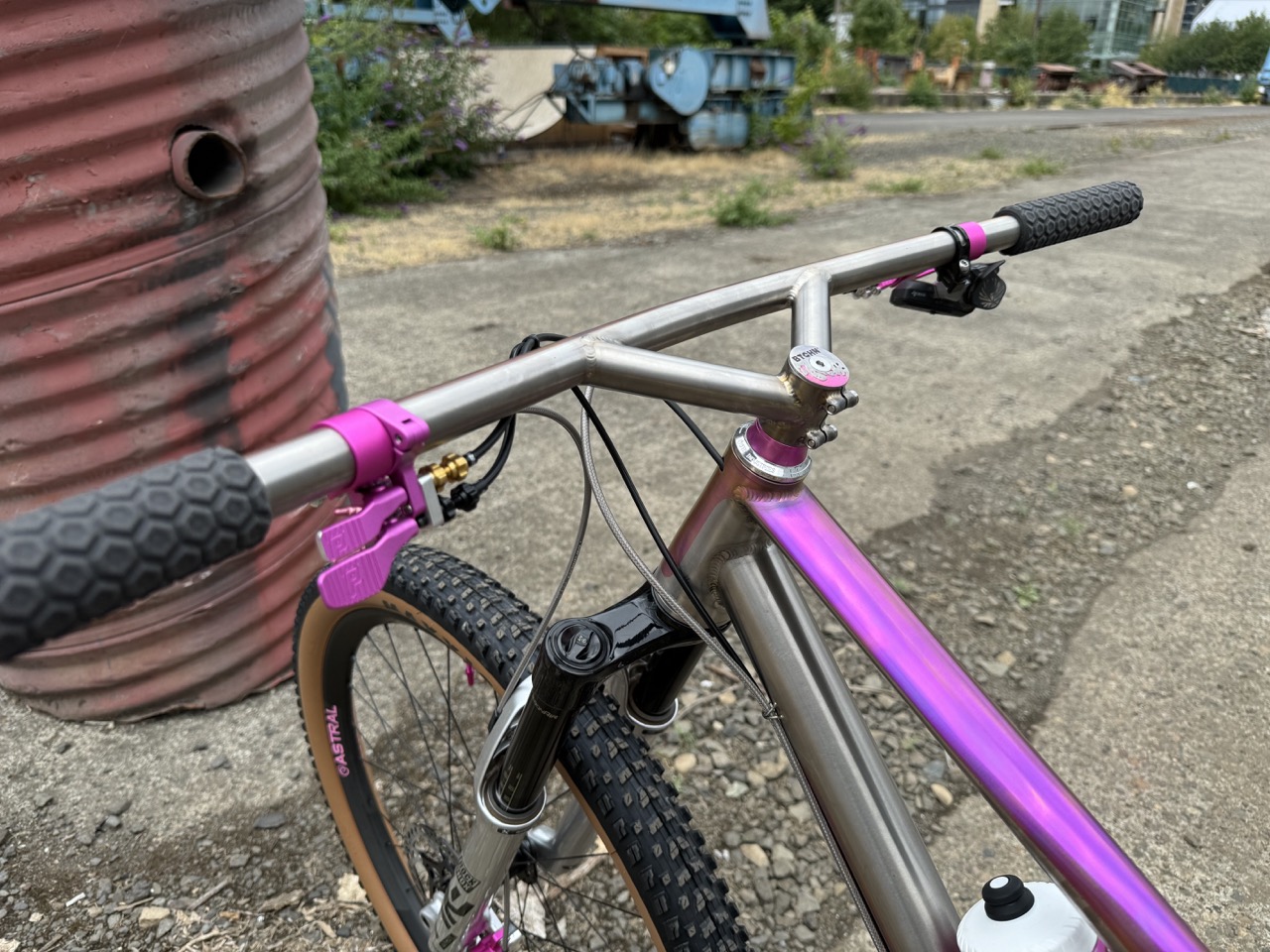
Another thing you might notice is the top tube shape. It’s heavily ovalized at the head tube. Tyler said that this “acts as a flex stay to accommodate the 2.5deg of flex needed as the seatpost goes through its travel”. Also, the main pivot of the seat tube is a 16mm Igus Shaft that rides on Igus bushings.
What About Those Seat Stays?
On to the rear of the GeoShift. Tyler says that the rear of the bike is based on the Albatross HT series. It allowed BTCHN’ to “decouple” the seat tube from the rear end to allow for this adjustability. Conventional hardtails experience some rear steering as the rear wheel twists on a plane that is pointed up from horizontal. By lowering the seat stays, the axis of the rear axle rotates around the horizontal centerline of the bike. This should, in theory, improve mid-corner grip, but also maintain balance, reducing unintuitive frame flex.
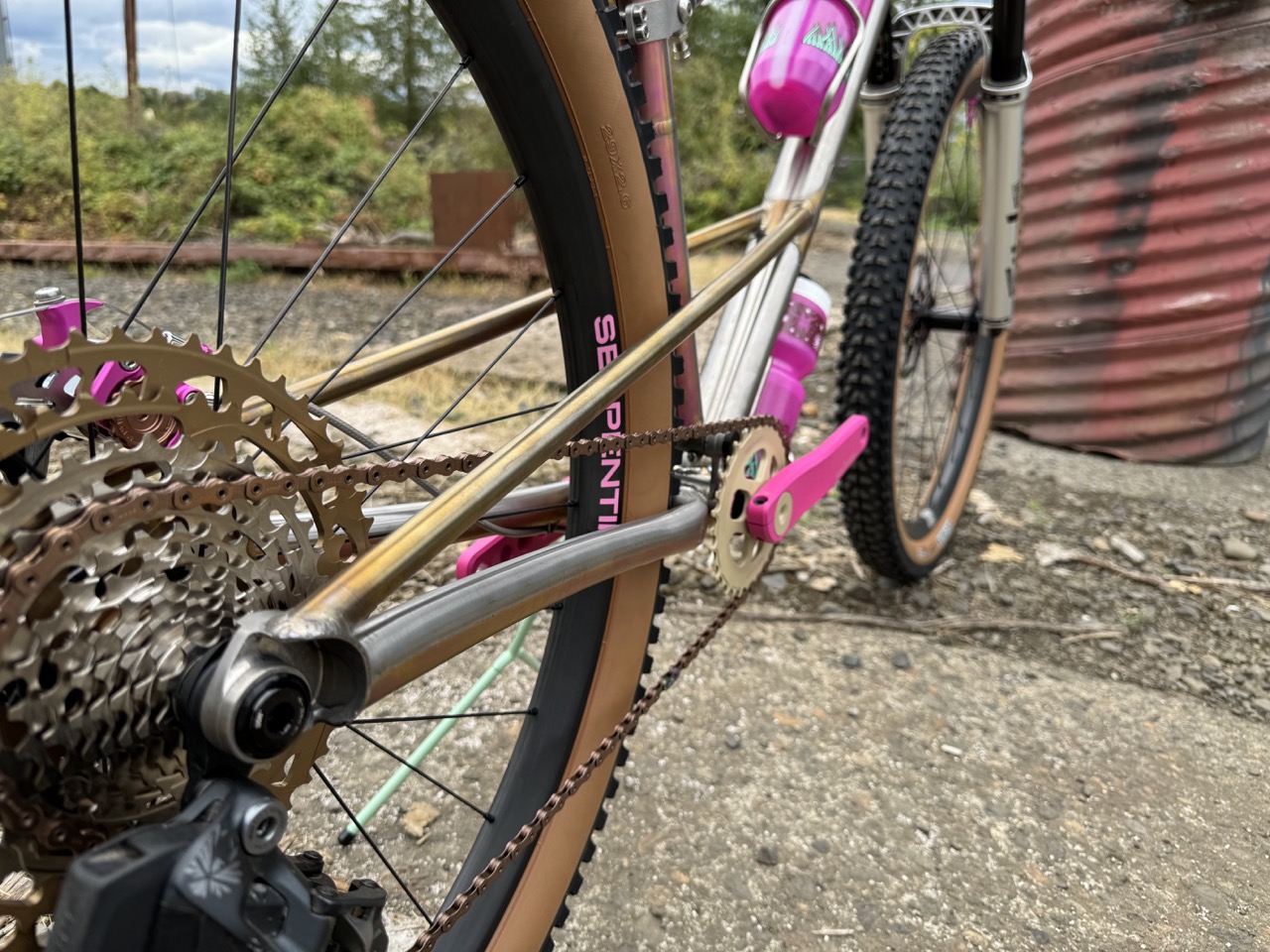
Sadly, Tyler is not currently planning to produce this frame. He did say that depending on the amount of interest and their testing goes well, they may look into finding a way to do some small production runs.
Tyler said, “We really think this would be very appropriate in the gravel bike sector where one tends to spend more time in varied terrain, and where comfort and performance are both at the forefront“.
I’m looking forward to seeing what else comes from Tyler’s imagination and creativity. Hopefully, we won’t have to wait until next year’s MADE Show. Please take the time to follow BTCHN’ Bikes on their Instagram and check out the beautiful frames, bikes, posts, and bars at their website below.
